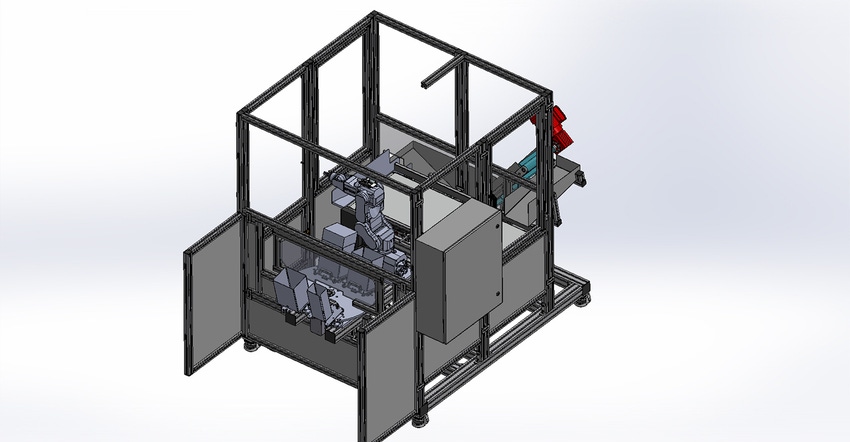Medical Tubing Supplier Triples Productivity with Automation System
The flexible pick-and-place system, which incorporates Epson-powered machine-vision technology, processes 15 different medical tubing configurations.
June 6, 2022

When a plastics processor specializing in injection molding for medical device OEMs wanted to automate its medical tubing line, it turned to Plastimation, a designer of custom factory automation systems. It collaborated with longtime partner Epson to develop a competitive solution that would meet the stringent quality requirements of the medical device sector. In the process, the customer was able to triple productivity.
The standard 2.5-in.-long tubes, constructed from clear PET or translucent polypropylene, come in a range of diameters and with open ends or nozzles, resulting in 15 different varieties. The customer required a flexible automation system that could pick and place the plastic tubes but also was "smart" enough to distinguish between the 15 different tubing types.
Plastimation created a machine vision system powered by Epson’s Integrated Vision Guide and an Epson C4 Compact 6-axis robot. The utilization of these two Epson components allowed for ease of integration, set up, and operation.
Epson C4 robots feature a compact wrist pitch and slim body design for flexibility and range of motion, allowing the robot to access hard-to-reach areas in a small footprint. Offering 180° of motion, fast cycle times, 600-mm reach, and compatibility with Epson RC+ software, the C4 model provides power, reliability, and ease of use to meet the unique pick-and-place demands requested by the customer.
Epson makes robotic-guided precision applications simple to build and install, notes Plastimation, which is an Epson AutomateElite Gold partner. Epson offers one easy development environment — Epson RC+ 7.0 — for both C4 6-axis robots and Vision Guide. The fully integrated Epson Vision Guide features a series of objects to find, measure, and inspect parts and features. In this case, Steve Sicard, Systems Integrator at Plastimation, was able to use the geometric search tool to successfully detect the plastic tubes regardless of the varying diameters and nozzle types.
The software’s geometric search tool allows users to draw a bounding box around the first tube so the software detects the edge of the object. Setting the appropriate pixel tolerance settings helped define the edge and recognize the tube in various positions. Once the tolerance values were set while scanning the first tube variety, it was easy for the software to learn the 14 remaining variations simply by placing them under the camera one at a time and drawing a bounding box around the tube in the frame.
Once Epson Vision Guide detects the tube, Epson’s C4 robot picks the parts at a rate of 40 parts per minute. As the part is picked with a vacuum cup, repeatability of the robot is crucial to ensure parts do not fall or get lost. Epson’s integrated vision system continuously delivered on precision, picking up the central part of the tube each time, said Plastimation. The system then placed the product in the same orientation in the box. The speed, precision, and reliability of Epson’s robot allowed the customer to triple productivity, packaging a box of 50 tubes in under two minutes.
Plastimation has been in business for more than 10 years, and during that time it has witnessed an uptick in companies seeking to onshore their manufacturing processes. “While there are many reasons for this trend, significant focus has been placed on an increase in overseas labor costs and an increased availability of affordable, easy-to-use automation tools,” said Plastimation. Domestic manufacturing has allowed Plastimation to maintain a competitive edge while delivering reliable solutions that address unique customer applications. Since the company’s inception, Plastimation has worked with Epson to offer customers cost-effective solutions for projects.
“We work on a lot of vision-guided applications, and Epson is the most cost-effective solution,” said Sicard. “The price is very competitive; it’s easy to work with; the systems are easy to set up; and Epson has a full range of tools in its vision package that is unlike any other vision system,” added Sicard.
To simplify installation for customers, Plastimation follows a modular design principle for its automation systems. This allows customers to easily reposition parts of the system as needed for different applications. The modular design also permits easy integration of products. To streamline the installation process, Plastimation’s automation systems are designed to be wheeled onto a truck; upon delivery, end users can simply wheel the system out of the truck, roll it onto the factory floor, and power it up for use.
About the Author(s)
You May Also Like




